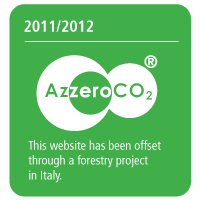Innovation in Architecture
Published by Mafra on Thu, 29/03/2012 - 12:30
It is important to underline that the house architecture doesn’t point at innovation, but at the recovery of ancient building tradition. The competition requirements instead ask the possibility not only to assembly but also to disassembly the building. This kind of requirement complicates the construction and its building system. In fact this requirement is not common in architecture and belongs just to temporary equipment and not to housing. To recovery the tradition requires an innovation, primarily related to the construction solutions, but also in the functionality, shape and organization of the internal living space, that needs a morphological simplification in order to permit easy assembly operations.
The innovation in Architecture of the Med in Italy house could be synthetized in the following topics:
1. New spatial and functional concepts
At the spatial level the house is conceived as a traditional one, in which the living room and the bedroom are strongly separated. The kitchen as well is confined in a properly dedicated room. But the continuity and fluidity of the space is assured by a corridor, large and lighted that change is role in the different zones: entrance in the living room separated by the living room thanks to the side of opening of the entrance door; laundry; toilet, thanks to the sliding doors, that can close the toilet as a separated room; office, in the bedroom.
2. New languages in the formal use of materials and textures
The whole house is based on the contrast between low-tech and hi-tech construction.The low-tech part is based on walls made of a wood frame that is filled with local heavy materials. The exterior image of the low tech part is related to a wicker layer. Wicker is an uncommon finishing for building wall. We believe that in the future housing that could generate from the Med in Italy prototype the wicker will be substitute by many other more appropriate finishing such as laminated, TRESPA, brick, metal sheets, wood panels, depending on the insertion context.
Dealing with the high-tech side of the prototype, architecturally this is highlighted by the PV layer. The innovating feature consists in the possibility to have color, that helps the integration not only in the house in itself but also in the site, either urban or not.
3. The appropriate use of light
Lighting design has been developed in order to highlight spatial and functional concepts, characteristics of materials and textures, described above. Innovative technologies are used together with low tech materials, which express maximum visual comfort, maximum energy saving, together with a warm atmosphere, in pure Mediterranean housing style.
























